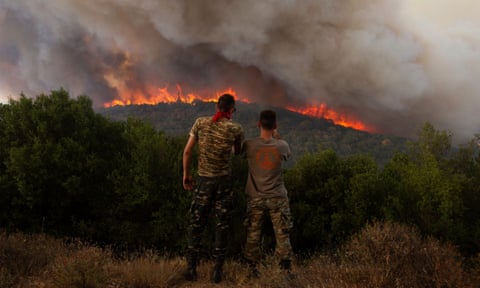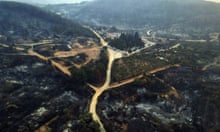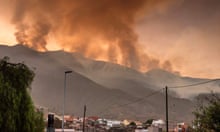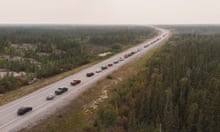Greece has been stricken by hundreds of wildfires this summer, with dozens of fires breaking out each day. The vast majority are extinguished quickly but some have blazed out of control.
One fire, in the Alexandroupolis and Evros region in the north-east, has destroyed homes and vast tracts of forest since it started on 19 August.
Another fire on the island of Rhodes burned for days in July, forcing holidaymakers and local people to flee homes and hotels.
The fire in the north-east was blamed for 20 of last week’s 21 wildfire-related deaths in Greece. Of those, 18 are believed to have been migrants whose bodies were found together in an area the fire had passed through.
Footage of the fire itself and the areas it has burned point to the scale of destruction.
As of Thursday, 582 firefighters had been deployed to the region, backed by 10 planes and seven helicopters from nine European countries.

village in north-east Greece on Thursday. Photograph: Anadolu Agency/Getty Images

The blaze, burning deep in the forest in the Dadia national park, is the largest single wildfire recorded in the EU since the European Forest Fire Information System started keeping records in 2000.
The Rhodes fire in July prompted what authorities described as the largest evacuation undertaken by the country, with about 20,000 people rescued.
after newsletter promotion
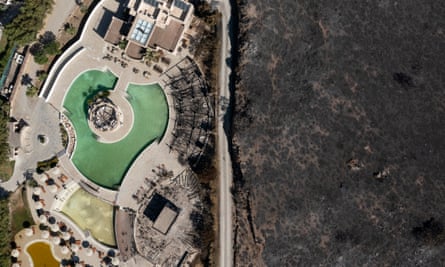
The human-caused climate crisis has increased the wildfire season by about two weeks on average across the globe and is responsible for a higher likelihood of fire and bigger burnt areas in southern Europe.
This year’s figures for the amount of land burned by wildfires in Greece and Europe are tracking ahead of the 2006-22 average.
Cumulative CO2 emissions from the Greek wildfires are also well up on the 2003-22 average.
The Greek fires are just one element of a series of record-shattering heatwaves, wildfires and floods that have destroyed lives in the US, Europe, India and China in 2023. Earlier this week, scientists warned the Guardian that the current level of extreme weather impacts boded ill for the future as emissions continue to be pumped into the atmosphere.
